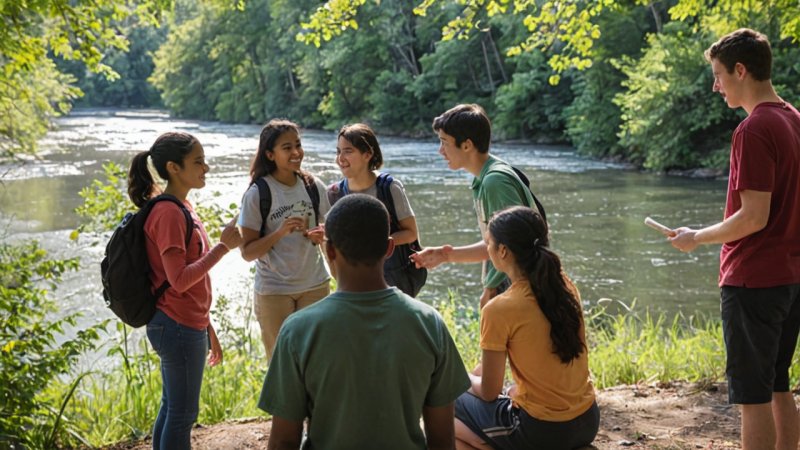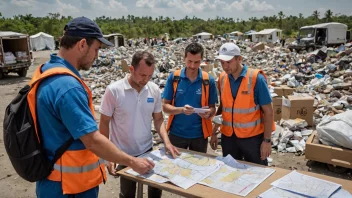In an era where climate change and environmental degradation are pressing concerns, the role of education in fostering environmental awareness becomes increasingly significant. Educational programs that focus on environmental issues not only inform individuals about ecological challenges but also inspire them to take action. This article delves into the various aspects of creating effective educational programs for environmental awareness, presenting insights into the best practices, methodologies, and resources available to educators, community leaders, and organizations.
The Importance of Environmental Education
Environmental education is essential for several reasons. Firstly, it cultivates a sense of stewardship among individuals, encouraging them to care for their surroundings. Secondly, it equips learners with the knowledge required to make informed decisions regarding environmental issues. Lastly, it promotes critical thinking and problem-solving skills, which are vital for addressing complex environmental challenges.
Understanding the Current Environmental Landscape
Before designing an educational program, it is crucial to understand the current environmental landscape. This includes recognizing the pressing issues such as climate change, biodiversity loss, pollution, and resource depletion. By grasping the urgency of these problems, educators can better tailor their programs to address relevant topics and engage their audience effectively.
Key Components of an Effective Educational Program
Creating an impactful educational program requires careful planning and consideration of several key components:
- Target Audience: Identify who the program is aimed at – children, teens, adults, or specific community groups. Understanding the audience helps shape the content and delivery method.
- Clear Objectives: Define what the program aims to achieve. Whether it’s raising awareness, promoting sustainable practices, or fostering advocacy, clear objectives guide the program’s direction.
- Engaging Content: Utilize various formats such as workshops, interactive activities, documentaries, and guest speakers to make the content engaging and relatable.
- Assessment and Feedback: Incorporate methods for assessing participants' understanding and gathering feedback to improve future iterations of the program.
Developing Curriculum and Materials
Once the foundational components are established, the next step is to develop the curriculum and materials. Here are some strategies to consider:
Integrating Multidisciplinary Approaches
Environmental issues intersect with various fields, including science, economics, sociology, and ethics. By integrating these perspectives, educators can provide a holistic understanding of environmental challenges. For example, a lesson on climate change could include scientific explanations, economic impacts, and ethical considerations regarding future generations.
Utilizing Local Context
Tailoring the program to reflect local environmental issues can enhance relevance and engagement. For instance, if a community faces water scarcity, the program could focus on water conservation techniques and the importance of sustainable water management.
Incorporating Hands-On Experiences
Experience-based learning is particularly effective in environmental education. Opportunities for field trips, community clean-up events, or hands-on projects (like creating a community garden) allow participants to apply what they’ve learned in real-world contexts.
Engaging the Community
Community involvement is crucial for the success of educational programs. Here are some ways to foster community engagement:
Collaboration with Local Organizations
Partnering with local environmental organizations, schools, and businesses can enhance program reach and resources. These collaborations can provide expertise, funding, and volunteers to support program initiatives.
Creating a Network of Advocates
Encouraging participants to become advocates for environmental awareness can foster a sense of ownership and commitment. This can be achieved through training programs that equip them with the tools to spread awareness in their communities.
Utilizing Social Media and Technology
Leveraging social media platforms and technology can help spread the word about educational programs and engage a broader audience. Creating online resources, webinars, and virtual events can also facilitate participation from individuals who may not be able to attend in person.
Evaluating the Program’s Impact
To ensure the effectiveness of educational programs, it is essential to evaluate their impact. This can be done through:
Surveys and Feedback Forms
Collecting data from participants regarding their experiences, knowledge gained, and suggestions for improvement can provide valuable insights into the program’s effectiveness.
Longitudinal Studies
Conducting studies that track participants’ behaviors and attitudes over time can help assess the long-term impact of the program on environmental awareness and action.
Community Feedback
Engaging the broader community in discussions about the program’s impact can provide a more comprehensive understanding of its effectiveness and areas for growth.
Case Studies of Successful Programs
Examining successful educational programs can provide inspiration and practical ideas. Here are a few notable examples:
Eco-Schools Program
This global program empowers students to engage in environmental action through hands-on projects and initiatives. Schools participating in the program work towards becoming more sustainable while instilling a sense of environmental responsibility in students.
Project Learning Tree
This program offers educators resources and activities to teach students about forests, ecosystems, and sustainable practices. It emphasizes experiential learning and community involvement.
Community-Based Adaptation in Bangladesh
This initiative focuses on educating communities about climate change and its effects. Through workshops and training sessions, community members learn about adaptation strategies and sustainable practices.
Resources for Further Learning
For those interested in creating educational programs for environmental awareness, numerous resources are available:
- Books: Titles such as “Eco-Literacy: Educating for a Sustainable Future” provide foundational knowledge on environmental education.
- Online Courses: Platforms like Coursera and edX offer courses on environmental science and education.
- Websites: Organizations like the North American Association for Environmental Education (NAAEE) provide valuable resources, toolkits, and networking opportunities.
Conclusion
Creating educational programs for environmental awareness is an important step towards fostering a more sustainable future. By understanding the current environmental landscape, developing engaging curricula, and actively involving the community, educators can inspire individuals to take action. The integration of multidisciplinary approaches and hands-on experiences can further enhance the impact of these programs. As we face pressing global challenges, it is imperative that we invest in education as a means of empowering individuals to contribute to environmental stewardship. Together, we can cultivate a more informed and proactive society that is equipped to tackle the environmental issues of our time.






